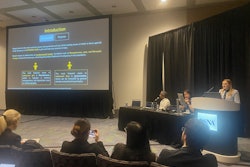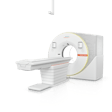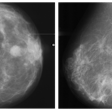CHICAGO -- AI could lead to lessened workloads and increased consensus discussions in a real-world setting involving double reading of screening mammograms, a study presented December 1 at RSNA 2024 highlighted.
Karin Dembrower, MD, PhD, from the Karolinska Institute in Solna, Sweden, presented her team’s findings demonstrating how when AI fully replaced one radiologist in a double-reading setting, the cancer detection rate increased. The AI system also flagged more breast screening exams while leading to less recalls.
“AI is ready for implementation in population-based breast cancer screening with double reading,” Dembrower said.
While previous studies have highlighted AI’s potential as an imaging assistant in breast cancer screening, others have proposed AI’s use as a dedicated imaging reader.
The ScreenTrustCAD trial was a prospective interventional study of AI in population-based breast cancer screening conducted in 2021 and 2022. It included 55,581 women. In 2023, the Karolinska Institute fully replaced one radiologist with a commercial AI system (Insight MMG, Lunit) for breast imaging.
For their RSNA presentation, Dembrower and colleagues focused on how flagging, recall, and cancer detection changed with AI as a second reader compared with the time before the technology’s implementation.
The period during AI implementation led to more screening exams being flagged and less exams being recalled. Meanwhile, cancer detection rate rose compared with conventional double reading by two radiologists.
| Comparison between AI, radiologist in double reading for breast cancer screening | ||
|---|---|---|
| Measure | Radiologist as second reader | AI as second reader |
| Exams flagged | 7.4% | 8.7% |
| Exams recalled | 2.8% | 2.5% |
| Number of screen-detected cancers | 93 (out of 16,217) | 154 (out of 26,629) |
| Cancer detection rate per 1,000 | 4.8 | 5.5 |
| PPV of flagged exams | 7.7% | 6.7% |
| PPV of recalled exams | 15.3% | 22.5% |
The researchers also reported that overall reading time decreased by 36% and consensus meetings have become more important since the AI implementation. Additionally, queue times for patients have decreased from five to six weeks to zero and there is no bias since the radiologist does not have access to the AI system.
Finally, false-positive cases decreased from 89.6% pre-AI to 78% during the AI period.
Dembrower said that with these results in mind, AI could be favorably used as one of two readers in double reading of screening mammograms.
“Single reading with AI decreases the proportion of recalled and unnecessary biopsies,” she said.
Dembrower also gave advice for successful AI implementation. Steps include having robust and secure IT software, having a legal framework in place in case AI makes mistakes, and having agreement with regional hospital systems and PACS providers.
She said that results regarding interval cancers are expected to be available by June 2025.
For full 2024 RSNA coverage, visit our RADCast.



















